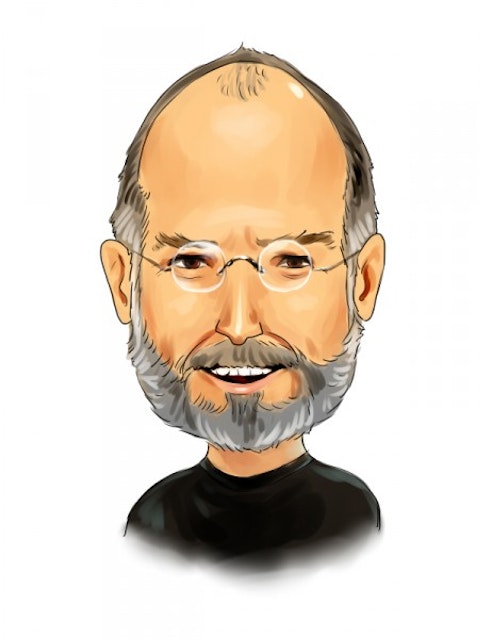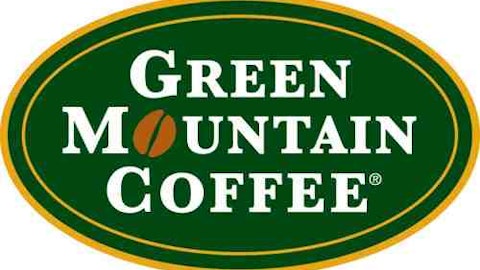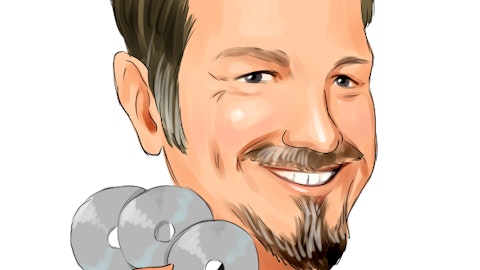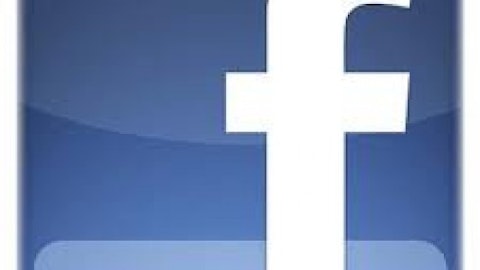Most investors attribute the success of Apple Inc. (NASDAQ:AAPL)’s products to the company’s late founder and CEO Steve Jobs. Much of the credit also goes to Senior Vice President of Design Jonathan Ive, whose designs redefined Apple Inc. (NASDAQ:AAPL)’s image. Ive designed the MacBook Pro, MacBook Air, iMac, iPod, iPhone, and the iPad, and is responsible for their sleek aluminum unibody designs. Many people, myself included, believe that Ive was just as instrumental to Apple Inc. (NASDAQ:AAPL)’s success as Jobs.

Therefore, I believe that investors in consumer goods should take a moment to think about the designers behind the products. Ive set the bar very high for industrial designers, and only a few designers have been able to measure up to his success.
Investing in the Yves Behar index
One such designer is Yves Behar, the prolific founder of Fuseproject, an award-winning industrial design and brand development firm. He also serves as Chief Creative Officer of wearable tech company Jawbone. Like Jonathan Ive, Behar emphasizes environmental sustainability and a minimalist approach to his designs. Behar has designed products for General Electric Company (NYSE:GE), Puma, Samsung, Prada, and Swarovski, among many others.
Since Behar’s designs have proven quite popular, it’s interesting to follow a few of his more prolific projects to gauge the effect of his designs on overall sales.
Redesigning fitness bands
Jawbone UP is a wristband that can track a user’s sleep routine, workout activity and dietary habits through an accelerometer which synchronizes to a companion iOS app. The results are logged over time and evaluated to help users improve their daily routines.

Source: Jawbone.com
Jawbone UP, which was re-released last November after some technical glitches, directly competes against NIKE, Inc. (NYSE:NKE)‘s popular FuelBand wristband, which arrived nine months earlier. Nike’s FuelBand is a similar product, which tracks the steps taken and calories burned daily. It also synchronizes to an iOS app, and results can be shared with friends over social networks for comparison and competition. FuelBand users can also unlock achievements for reaching certain fitness goals.
The FuelBand started a revolution in fitness tracking apps, and profit at Nike’s equipment division rose 18% year-on-year in fiscal 2012. Jawbone’s top and bottom-line growth are unknown, but the company was valued at $1.5 billion in 2011 based on previous rounds of funding.
Shaking up the soda industry
Yves Behar has been involved with another hot company, Sodastream International Ltd (NASDAQ:SODA), which manufactures home carbonation machines.
Shares of Sodastream International Ltd (NASDAQ:SODA) have surged more than 60% over the past twelve months. The company’s top and bottom lines rose 28.5% and 36.1% respectively, and its profit margin comes in at a healthy 9.9%. The company’s business model is simple razor to razor blades — it sells its SodaStream carbonation machines at paper thin margins and recovers profit through sales of higher margin flavor syrups and CO2 refill cartridges.
To update the look of SodaStream’s machines and emphasize its message of sustainability in reducing the usage of plastic bottles and aluminum cans, the company hired Behar to create Sodastream International Ltd (NASDAQ:SODA) Source — which he calls a “simple and beautiful object for the kitchen while keeping 21st century values.”

Source: Sodastream.com
A minimalistic approach to console gaming
In addition to fitness bands and soda machines, Yves Behar also designed the Ouya, a $99 game console powered by Google Inc (NASDAQ:GOOG) Android released in late June.

Source: Engadget.com
Although the Ouya sold out at all brick-and-mortar and online retailers on the first day of its release, reviews have been mixed. Most reviewers praised Behar’s design aesthetics, but criticized the cheap construction of the controller and limited selection of controller-driven games. Most games on Android, like Angry Birds and Candy Crush, are designed for the touch-screen interfaces of smartphones and tablets.
Despite its shortcomings, the Ouya raised an interesting question — could Android-powered consoles challenge the dominance of dedicated game consoles from Sony Corporation (ADR) (NYSE:SNE), Microsoft Corporation (NASDAQ:MSFT) or Nintendo Co., Ltd (ADR) (OTCMKTS:NTDOY)?
It’s a question NVIDIA Corporation (NASDAQ:NVDA) tried to answer with its handheld Android-device the Shield. This is a pricier $299 device that resembles an Xbox controller with an attached display. Reviews have also been mixed, due to its high price tag and hybrid touch screen and controller interface. The Shield definitely isn’t a make-or-break device for NVIDIA Corporation (NASDAQ:NVDA), which primarily produces graphics cards. The handheld product’s design definitely lacks the minimalist polish of Ive or Behar’s designs.
A Foolish final question — does the designer matter?
Industrial design is only a single part of the manufacturing process, but it is definitely one of the most important steps. Would as many people have bought the original iPhone if it wasn’t designed by Ive? Would people have paid attention to the Jawbone UP, SodaStream and the Ouya if not for Behar’s designs?
Obviously, investors should not base their investments on a single designer’s aesthetics. Yet Yves Behar tends to be involved in some undeniably fascinating projects, such as the upcoming Scanadu health scanner, which resembles a medical tricorder from Star Trek. Therefore, it might be worth following his career to find some interesting companies to invest in.The article Should You Invest in This Designer’s Footsteps? originally appeared on Fool.com.
Leo Sun owns shares of Apple. The Motley Fool recommends Apple, Google, Nike, NVIDIA, and SodaStream. The Motley Fool owns shares of Apple, Google, Nike, and SodaStream.
Copyright © 1995 – 2013 The Motley Fool, LLC. All rights reserved. The Motley Fool has a disclosure policy.




